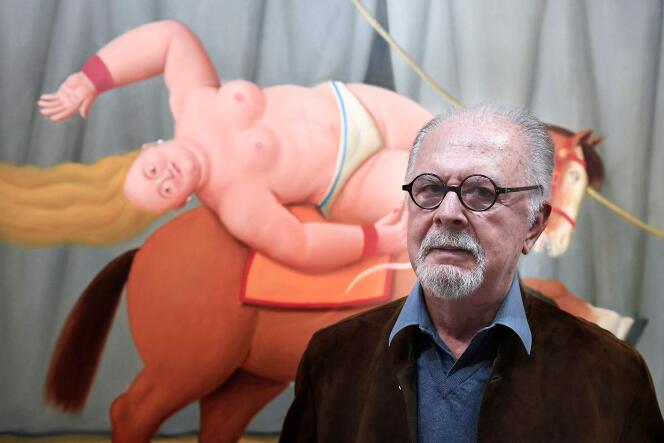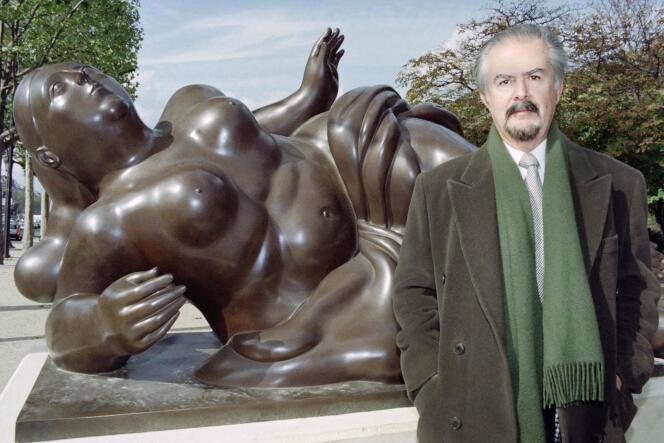
Colombia's most famous artist, Fernando Botero, who was known for his voluptuous depictions of people and animals, has died aged 91, President Gustavo Petro announced on Friday, September 15.
Botero's works of plump and slightly surreal forms became enormously popular and were on display in museums and public spaces in cities around the world, including Bogota, Madrid, Paris, Singapore and Venice.
"Fernando Botero, the painter of our traditions and defects, the painter of our virtues, has died," the president posted on social media.
Botero's hometown, Medellin, declared a week of mourning, with Mayor Daniel Quintero saying his works on display in that city "will live forever." Local media hailed Botero as the greatest Colombian artist of all time, reporting his health had deteriorated in recent days as he suffered pneumonia.
Botero – who had been dubbed the "Picasso of Latin America" – was a passionate and tireless artist, his oeuvre of more than 3,000 paintings and 300 sculptures proof of an insatiable appetite to create.
Even in his later years, he said he was working 10 hours a day. "I work more now perhaps because I know that there is so little time left," he said an interview with Agence France-Presse (AFP) in 2012, the year of his 80th birthday. "I often think about death and it saddens me to leave this world and not be able to paint more. I love it so much."
World travels
Botero was drawn to art at a young age and by 15 was selling his paintings of bulls and matadors at the La Macarena bullfighting ring in Colombia's second-largest city, Medellin, where he was born on April 19, 1932, the son of a modest travelling salesman.
After a first solo exhibition in the capital Bogota in the 1950s, Botero left for Europe, travelling to Spain, France and Italy, where he discovered classical art.
He moved on to Mexico, becoming influenced by its muralists, and then to New York in 1960, arriving with "$200 in my pocket", he said in the 2012 interview.
It was there that he met a German art curator who organized triumphant exhibitions in Germany in the 1970s, launching his name. "I went from being a complete unknown without even a New York gallery to being contacted by the biggest merchants in the world," he said.
Volume, not 'fat'
The trademark oversized dimensions of his work emerged in 1957 in his painting "Still Life with Mandolin". He discovered "a new dimension that was more voluminous, more monumental, more extravagant, more extreme."
An admirer of Italian Renaissance art, he did not accept the interpretation that his subjects are fat. "If I paint a woman, a man, a dog or a horse, I always do with this idea of the volume. It is not that I have an obsession with fat women," he said in an interview with daily Spanish newspaper El Mundo in 2014.
Sculpture became a major component of his work, developed at a renowned Italian center of sculpture, Pietrasanta.
Botero said he was inspired by beauty but also the troubles of his native country, gripped by armed conflict for more than 50 years.
In 1995 a powerful bomb placed at his sculpture "The Bird" in Medellin killed around 30 people and wounded scores. Botero in 2000 donated a replica to stand beside the exploded sculpture and called "Bird of Peace".
Some of his work portrays scenes of Colombian guerrilla fighters, earthquakes and brothels. In a departure, he produced in the 2000s a series depicting abuse and torture at the US-run Abu Ghraib prison in Iraq, saying afterward he was driven by shock and anger.
"Themes of power and excess are not entirely new to Mr. Botero's seemingly sunny art," The New York Times said in a 2006 review. "His evocations of obesity itself imply a sinister cluelessness."
Married three times, his last bride being Greek artist Sophia Vari, Botero had four children, one of whom died in an accident aged four.
